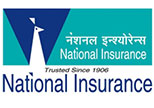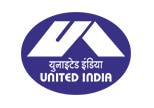GST on Health Insurance: Important Things You Need to Know!

Many people buy health insurance to pay hospital bills and stay stress-free during medical emergencies. But here’s something most people miss. You don’t just pay for the insurance. You also pay tax on it. GST for health insurance adds to your cost every year. Understanding everything about it is important because it directly impacts how much you pay.
Key Highlights
- The GST rate for health insurance is fixed at 18%.
- CGST, SGST, or IGST applies based on the policy location.
- You can claim tax deductions under Section 80D.
- Smart planning helps reduce the premium and GST impact.
Table of Contents
How is GST applied to health insurance in India?
There are five GST slabs in India - 0%, 5%, 12%, 18%, and 28%. The GST rate for health insurance is fixed at 18%. This means the government adds 18% tax to your health insurance premium.
Take Ravi's scenario to understand the process better. He decides to purchase a health insurance policy with a base premium of Rs. 15,000. When GST at 18% is added, it amounts to Rs. 2,700. Therefore, Ravi ends up paying a total of Rs. 17,700 for the policy. It’s important to note that the Rs. 2,700 is not retained by the insurance provider. It is collected on behalf of the government and remitted accordingly.
Types of GST on health insurance
GST for health insurance policies comes under the following three types in India:
- CGST: CGST is the Central GST charged by the central government when you buy or renew a health insurance policy within a state or Union Territory (UT). The CGST rate is 9%, and it is collected by the central government, along with the SGST.
- SGST: SGST is the State GST charged by the state government when you buy or renew a health insurance policy within a state or UT. The SGST rate is 9%, and it is collected by the state where you bought or renewed the policy, along with the CGST.
- IGST: IGST is the Integrated GST charged when you buy or renew a health insurance policy between two different states or UTs. The IGST rate is 18%, which is the sum of CGST and SGST. The central government collects IGST and shares part of it with the state where the policyholder is based.
How was health insurance taxed before GST?
Premiums were taxed with different charges before GST for health insurance. The basic service tax rate was 14%, which was applied to health insurance policies. There was also a 0.5% Swachh Bharat Cess and a 0.5% Krishi Kalyan Cess. These taxes were added on top of the service tax, increasing the overall cost of health insurance.
Why 18% GST tax is levied on health insurance
Paying an 18% GST for health insurance premiums brings the following economic and administrative benefits:
1. Streamlined tax system
A complicated and confusing tax structure existed earlier for insurers and policyholders. But now, all separate taxes are replaced by a single and unified 18% rate.
This clear system reduces errors, avoids delays, and improves compliance. Insurers can follow rules easily, and policyholders understand their costs better. It makes the entire process simple and hassle-free.
2. Encourages digital compliance and transparency
One of the biggest benefits of GST for health insurance is the shift towards digital compliance. Every health insurance transaction under GST is now digitally recorded. Here’s how it works!
- Proper Invoices: Every transaction is issued with a GST-compliant invoice. This ensures transparency for both the insurer and the policyholder.
- GSTIN Tracking: Each transaction is tracked using a unique GST Identification Number (GSTIN), making it easy to trace and verify the transaction.
- GST Returns: Insurers are required to file GST returns regularly. This helps maintain accurate records and ensures that no tax is evaded.
Check Also:
3. Supports revenue generation for public health initiatives
The 18% GST rate for health insurance also plays an important role in funding public health initiatives. The government uses the GST collected on health insurance to support healthcare.
It funds programs like Ayushman Bharat for poor families, builds hospitals, and gives subsidies to help low-income people afford insurance.
4. Eligibility for tax deductions
Although GST for health insurance may raise premiums, there is a silver lining. The premium amount (including the GST paid) is eligible for a tax deduction under Section 80D of the Income Tax Act, 1961. This means policyholders can claim deductions for the full amount paid, including the 18% GST.
5. Formalization of the insurance industry
The mandatory application of GST for health insurance has helped bring more formality and professionalism to the insurance industry. Here’s how:
- Registration Under GST: Small insurance agents and brokers must now register under the GST system. This ensures they operate within the legal framework and follow the required procedures.
- Maintaining Digital Records: Insurers and brokers must maintain proper digital records, which increases accountability and reduces the chance of mistakes or fraud.
- Better Governance: With the formalization of the industry, there is now greater accountability in the insurance sector. It improves trust between insurers and policyholders.
Check Also:
6. Indirectly promotes preventive healthcare
An 18% GST rate for health insurance grants an indirect benefit to policyholders. Insurers offer preventive healthcare to reduce claims and manage costs. Many health insurance policies now offer the following features:
- Free Health Checkups: Insurers are offering free health checkups to policyholders to catch health issues early and prevent larger, more expensive claims.
- Fitness Tracking: Many policies now offer fitness tracking devices or rewards for healthy behaviors, encouraging policyholders to stay active and healthy.
- Diet and Wellness Consultations: Insurers are also providing consultations for diet planning and overall wellness to help policyholders stay in good health.
How to save on GST while buying health insurance?
While you can't avoid the 18% GST rate for health insurance, you can reduce your overall premium and tax burden through smart planning.
- Opt for multi-year health insurance policies.
- Choose family floater plans instead of individual policies.
- Compare policies online to find lower premium options.
- Claim a full deduction under Section 80D (including GST).
- Use top-up or super top-up plans for higher coverage.
- Buy insurance at a younger age to lock in lower premiums.
- Leverage employer-provided group health insurance.
- Select plans offering loyalty discounts or no-claim bonuses.
- Purchase directly from insurers to avoid broker or agent fees.
Understanding taxes on health insurance helps you plan better and save more. A little awareness can go a long way in making your health coverage more affordable and effective. Stay informed, compare plans wisely, and use all tax benefits available to you.



















































